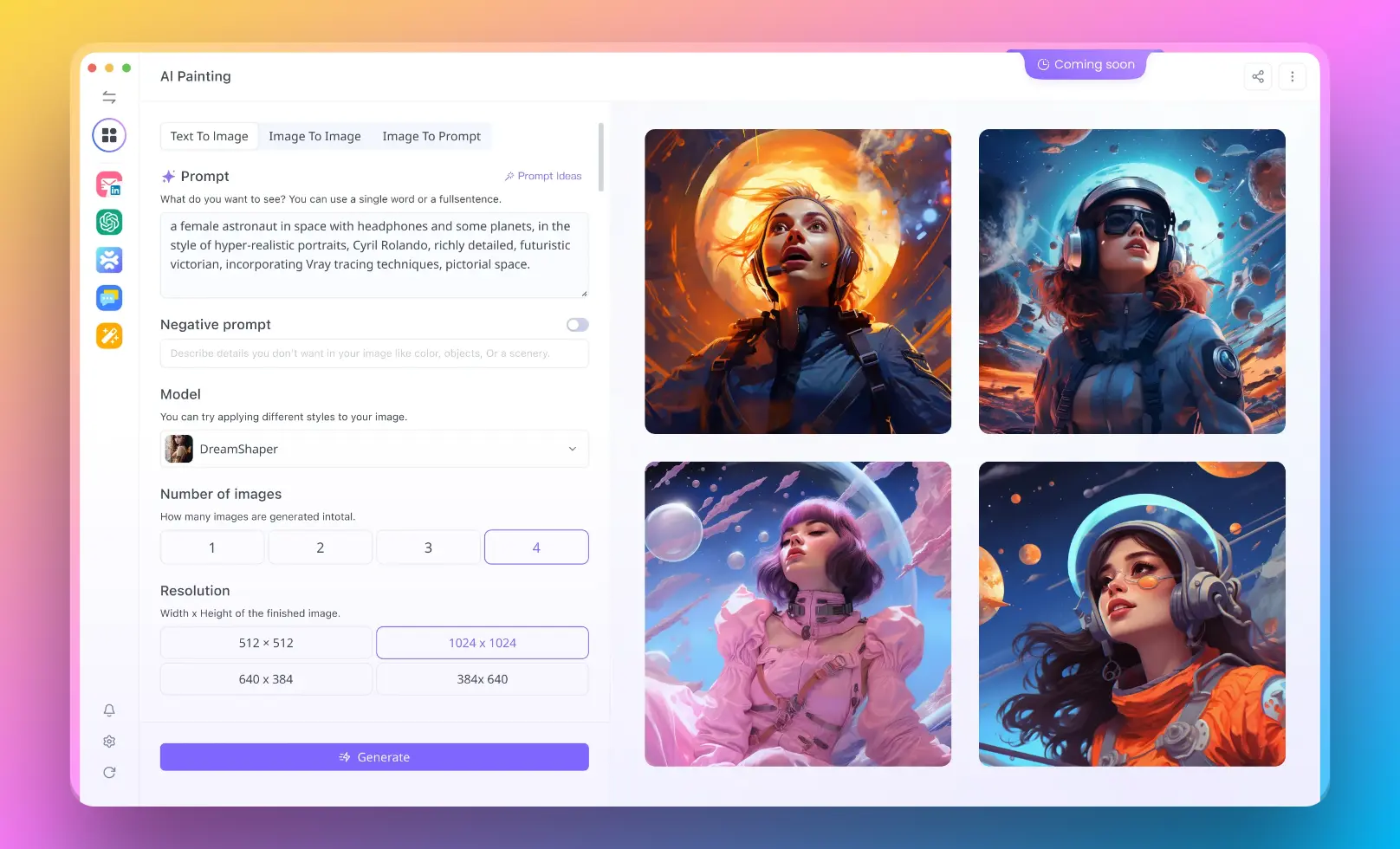Then, You cannot miss out Anakin AI!
Anakin AI is an all-in-one platform for all your workflow automation, create powerful AI App with an easy-to-use No Code App Builder, with Deepseek, OpenAI's o3-mini-high, Claude 3.7 Sonnet, FLUX, Minimax Video, Hunyuan...
Build Your Dream AI App within minutes, not weeks with Anakin AI!

In the rapidly evolving landscape of AI-assisted creative tools, Blender MCP Server stands out as a groundbreaking integration that connects the powerful 3D creation software Blender with advanced AI models. This innovative technology is transforming how artists, designers, and developers approach 3D modeling by enabling natural language interaction with the Blender environment.
Check out HiMCP, where you can find any MCP Server with ease!
What is Blender MCP Server?
Blender MCP Server is an integration system that connects Blender, the popular open-source 3D creation suite, with AI assistants like Claude through the Model Context Protocol (MCP). This protocol serves as a bridge that allows AI models to directly interact with and control Blender's functionality. The system consists of two main components: a Blender addon that creates a socket server within the application and a Python server that implements the Model Context Protocol.
By establishing this connection, Blender MCP Server enables users to create, modify, and manipulate 3D models and scenes using natural language prompts. Instead of navigating complex menus and learning intricate shortcuts, users can simply describe what they want to create or modify, and the AI will execute the appropriate commands in Blender.
How Blender MCP Server Works
The Technical Architecture of Blender MCP Server
At its core, Blender MCP Server operates through a socket-based communication system. The architecture consists of:
- Blender Addon (addon.py): This component runs within Blender itself, creating a socket server that listens for commands and executes them in the Blender environment.
- MCP Server (src/blender_mcp/server.py): This Python server implements the Model Context Protocol, serving as the intermediary between Claude AI and the Blender addon.
- Communication Protocol: The system uses a simple JSON-based protocol over TCP sockets. Commands are sent as JSON objects with a type and optional parameters, while responses contain status information and results or error messages.
Setting Up Blender MCP Server
Installing and configuring Blender MCP Server requires several steps:
- Ensuring prerequisites are met, including Blender 3.0+ and Python 3.10+
- Installing the uv package manager for handling dependencies
- Setting up Claude Desktop or other compatible AI interfaces
- Installing the Blender addon through the preferences menu
- Configuring the connection between the MCP server and Blender
Once everything is configured, users can start the connection from Blender's 3D View sidebar and begin interacting with the AI to create and manipulate 3D content.
Key Features of Blender MCP Server
Creative Capabilities of Blender MCP Server
The integration offers a wide range of capabilities that significantly enhance the Blender workflow:
Two-way Communication: The system enables bidirectional interaction between the AI and Blender, allowing for a conversational approach to 3D creation.
Object Manipulation: Users can create, modify, and delete 3D objects in Blender through natural language commands, making the modeling process more intuitive.
Material Control: The system provides capabilities for applying and modifying materials and colors, allowing for detailed visual customization of models.
Scene Inspection: Users can request detailed information about the current Blender scene, enabling better understanding and decision-making during the creation process.
Code Execution: For advanced users, the system allows running arbitrary Python code in Blender from Claude, opening up virtually unlimited possibilities for customization and automation.
Advanced Integrations in Blender MCP Server
Beyond the basic functionality, Blender MCP Server includes integrations with other powerful tools:
- Poly Haven Assets: The system can access and integrate 3D models, textures, and HDRI environments from Poly Haven's extensive library.
- Hyper3D Rodin: Users can generate AI-created 3D models through the Hyper3D Rodin integration, further expanding the creative possibilities.
- Arbitrary Python Execution: Advanced users can leverage the full power of Blender's Python API through the execute_blender_code tool, though this should be used with caution.
Real-World Applications of Blender MCP Server
Creative Use Cases for Blender MCP Server
The integration opens up numerous possibilities for 3D creation:
Rapid Prototyping: Designers can quickly generate concept models by describing what they want, accelerating the ideation phase of projects.
Scene Building: Complete environments can be constructed through descriptive prompts, such as "Create a low poly scene in a dungeon, with a dragon guarding a pot of gold."
Material and Lighting Design: Users can experiment with different visual styles by requesting specific material properties or lighting setups.
Reference-Based Creation: By providing a reference image, users can ask the AI to create a Blender scene that matches or is inspired by the reference.
Educational Tool: The system serves as an excellent learning resource for Blender beginners, who can observe how their natural language requests translate to specific Blender operations.
Productivity Enhancements with Blender MCP Server
Blender MCP Server significantly streamlines the 3D workflow:
Reduced Learning Curve: By translating natural language to Blender operations, the system lowers the barrier to entry for new users.
Faster Iteration: Artists can quickly test different ideas without manually navigating complex interfaces or writing code.
Workflow Automation: Common tasks can be condensed into simple prompts, reducing repetitive work.
Collaborative Potential: The natural language interface makes it easier for non-technical team members to participate in the 3D creation process.
Benefits of Blender MCP Server for Different Users
How Blender MCP Server Helps Beginners
For those new to 3D modeling, Blender MCP Server offers:
Simplified Interface: Natural language commands replace complex menus and shortcuts.
Learning Aid: Users can see how their requests translate to actual Blender operations, helping them learn the software.
Quick Results: Beginners can achieve professional-looking results without extensive training.
Reduced Frustration: The familiar communication style makes the learning process more enjoyable and less intimidating.
Advanced Features of Blender MCP Server for Professionals
Experienced Blender users can also benefit from:
Workflow Acceleration: Routine tasks can be completed more quickly using natural language commands.
Enhanced Creativity: The AI can suggest unexpected approaches or generate variations that might not have been considered otherwise.
Custom Automation: Through the Python code execution feature, professionals can create complex custom operations triggered by simple commands.
Asset Integration: Seamless access to Poly Haven assets and AI-generated models expands the available resource library.
Limitations and Considerations for Blender MCP Server
Current Constraints of Blender MCP Server
Despite its powerful capabilities, users should be aware of certain limitations:
Security Considerations: The code execution feature allows running arbitrary Python code in Blender, which could potentially be dangerous if misused.
Complexity Handling: Very complex operations might need to be broken down into smaller steps for effective execution.
Resource Requirements: Some features, particularly AI model generation, may require significant computational resources.
Learning Curve for Prompting: Although the system uses natural language, users still need to learn effective prompting techniques to get the best results.
Future Development Roadmap for Blender MCP Server
The Blender MCP Server project continues to evolve, with potential future enhancements including:
Enhanced AI Understanding: Improved recognition of 3D concepts and Blender-specific terminology.
More Third-Party Integrations: Connections to additional asset libraries and AI services.
Performance Optimizations: Making the system more responsive and efficient, particularly for complex operations.
Expanded Documentation: More examples and tutorials to help users maximize the potential of the tool.
Conclusion
Blender MCP Server represents a significant step forward in the integration of AI with 3D creation tools. By bridging the gap between natural language and complex software operations, it makes 3D modeling more accessible, efficient, and creative. Whether you're a beginner looking to enter the world of 3D design or a professional seeking to enhance your workflow, Blender MCP Server offers valuable capabilities that can transform your creative process.
The combination of Blender's powerful features with the intuitive interface provided by AI assistants creates a synergy that points toward the future of creative software: tools that understand our intentions and help us manifest our ideas with minimal technical friction. As this technology continues to develop, we can expect even more seamless integration between human creativity and computational power, opening new possibilities for digital creation across industries and applications.



